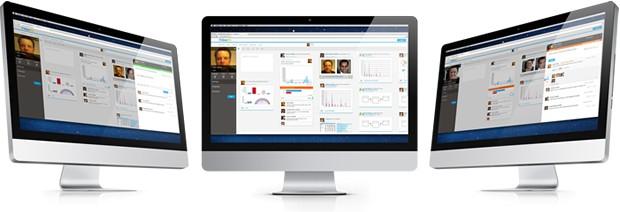At Yellowfin, we believe that people should be able to make better business decisions. The core of this idea is to ensure that data is used as a basis for decision-making. In addition, the best decisions are made through the collaborative efforts of people working together and using human judgments to take action.
So how do you bring these two ideas together? With decision-making built into your analytical application – that’s how!
Register for the launch of Yellowfin 7 to find out how we’re enabling everyone in your organization to make better fact-based decisions.
Discover how built-in and highly interactive Collaborative Business Intelligence (BI) can improve the quality and transparency of your decision-making.
Isolated data and intuition in the decision-making process
We have spent years working with organizations that use BI and analytics to improve their performance. What we came to notice is that often the data, sitting in isolation in a BI tool, becomes secondary component in the decision-making process. People rely more on intuition and gut feel than the baseline numbers that are actually driving business performance. The problem with this is that many research studies have shown that intuitive decision-making is overwhelming prone to failure thanks to bias.
So how did we address this? Well, those of you who have followed Yellowfin for a while now will know how much we care about Collaborative BI. With collaboration and Yellowfin’s Timeline, you can comment on reports and create discussion topics that allow you to share ideas and data over time – as you would in a real ongoing discussion. In Yellowfin 7, we have also added the ability to make collaborative decisions, and record those decisions in order to improve the transparency of organizational decision-making.

Natural decision-making
Making a decision is not a simple process. We’ve analyzed the steps people and organizations go through in the decision-making process, and optimized those practices in an online setting. To this end, users can make suggestions – which are voted on anonymously – prior to making an actual proposal to solve a problem. This proposal is then voted on again, and can be accepted or rejected by the initiator.
The collective decision-making process in Yellowfin is, therefore, akin to the natural decision-making processes that occur throughout most organizations today. Furthermore, the process, and ultimate decision, has the benefit of being saved. This allows people to understand why certain decisions were made in the past, the data that drove those decisions, as well as the individuals involved.
Should intuition play a role in decision-making?
Despite the need to base important decisions on fact, intuition can actually improve decisions – but only when it’s backed-up by baseline data.
The world is complex and professionals spend years building their skills to interpret the subtleties of their environment. This, combined with the right data, leads to better decisions and predictions about the future. That’s why we’ve added the ability to make and record decisions within Yellowfin.
Having used Yellowfin’s new built-in decision-making process internally for the past six months, I can certainly say it has improved transparency, accountability and the speed with which we make decisions at Yellowfin. I am certain our customers are going to be delighted with this addition too.
